Introduction
The landscape of healthcare marketing is rapidly transforming, driven by the increasing importance of social media engagement. As healthcare organizations strive to connect with their audiences, implementing effective strategies becomes paramount. From selecting the right platforms to creating shareable content and navigating legal considerations, each element plays a crucial role in fostering meaningful interactions.
This article explores essential best practices and innovative approaches that can enhance communication, build trust, and ultimately improve patient engagement in the digital age. By embracing these strategies, healthcare professionals can effectively harness the power of social media to expand their reach and deepen their impact.
Essential Best Practices for Healthcare Social Media Engagement
To engage effectively on social media, healthcare organizations should implement the following strategies:
-
Select the Appropriate Platforms: Prioritize online platforms that align with your target audience’s preferences. Facebook, Instagram, and LinkedIn have proven to be vital channels for engaging diverse demographics within the medical field. According to recent statistics, online platforms usage in healthcare is projected to continue its upward trend into 2024, underscoring the importance of selecting the right channels.
-
Maintain Consistent Branding: Establishing a cohesive brand identity is crucial. Ensure that your logos, messaging, and visual elements are uniform across all platforms, as this fosters brand recognition and trust among potential clients. As highlighted by Yuan Wang, ‘A strong brand presence on social media can significantly influence engagement and trust among individuals.’
-
Post Regularly: Consistency in posting is key to maintaining audience interest. Develop a structured posting schedule that includes a blend of educational resources, patient success stories, and promotional content. This balanced approach keeps your audience informed and engaged.
-
Monitor Engagement: Utilize analytics tools to evaluate engagement metrics such as likes, shares, and comments. Regularly assess these metrics to adapt your strategy effectively. Interacting with your audience through prompt replies to comments and messages fosters a sense of community, which is vital in communication.
As medical professionals increasingly recognize the significance of social media, the latest statistics indicate a surge in social media usage within the sector, reflecting a notable trend that will continue into 2024. Successful case studies, such as the Mayo Clinic Minute series, exemplify how blending education and entertainment can enhance audience engagement. This approach aligns with the growing preference for relatable and entertaining brands, making it imperative for organizations to adopt similar edutaining content strategies.
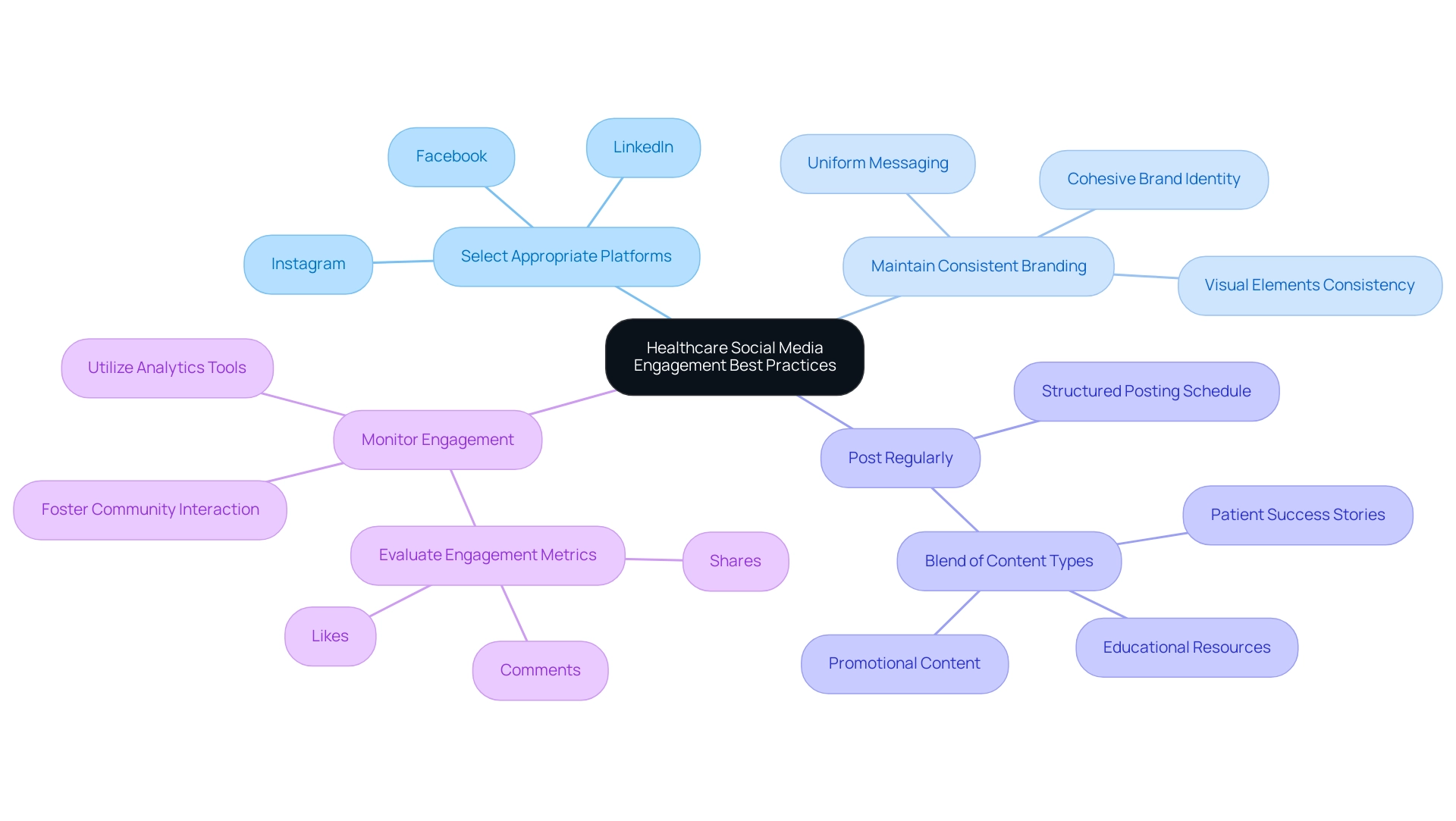
Creating Valuable and Shareable Content for Healthcare Audiences
To create valuable and shareable content in the medical field, consider implementing the following strategies:
-
Educational Infographics: Develop infographics that distill complex medical information into easily digestible formats. This approach not only enhances understanding but also broadens your reach, appealing to the 74% of U.S. adults who utilize social media for healthcare inquiries, with 61% having actively searched for health or medical information online. The engagement rates for healthcare infographics are significantly higher, making them an essential tool in your marketing arsenal.
-
Testimonials: Highlight stories from individuals who have experienced positive outcomes. Testimonials can foster trust and emotional connections, encouraging sharing among potential patients. Expert opinions underscore the impact of these stories; they resonate deeply with audiences, enhancing both credibility and reach.
-
Health Tips and Advice: Offer practical, relevant health tips tailored to your audience’s needs. Ensure that advice is grounded in reputable studies to maintain credibility. The potential for shareable content increases when it is both useful and trustworthy.
-
Video Content: Invest in short, engaging videos that explain procedures, introduce staff members, or discuss pertinent health topics. Video content has been shown to yield higher engagement rates, making it a crucial component of effective online marketing strategies. As medical professionals increasingly spend about 15 minutes per day on platforms like LinkedIn, leveraging video can significantly enhance your visibility and interaction with audiences.
-
Future Trends and Innovations: Stay informed about the latest trends in medical marketing, especially those involving personalized content and advanced analytics. Based on case studies, these innovations are anticipated to improve engagement and effectiveness in digital strategies for health services.
By incorporating these strategies, health professionals can efficiently leverage the power of shareable content through social media for healthcare to boost their marketing efforts and reach a broader audience. Additionally, statistics show that 1 out of 2 surveyed in the U.S. noted that medtech content marketing offered at least a 20% return on investment, underscoring the value of these strategies. The medical advertising market is projected to expand from $22.4 billion in 2022 to $29.2 billion by 2028, highlighting the growing importance of innovative marketing strategies in this sector.
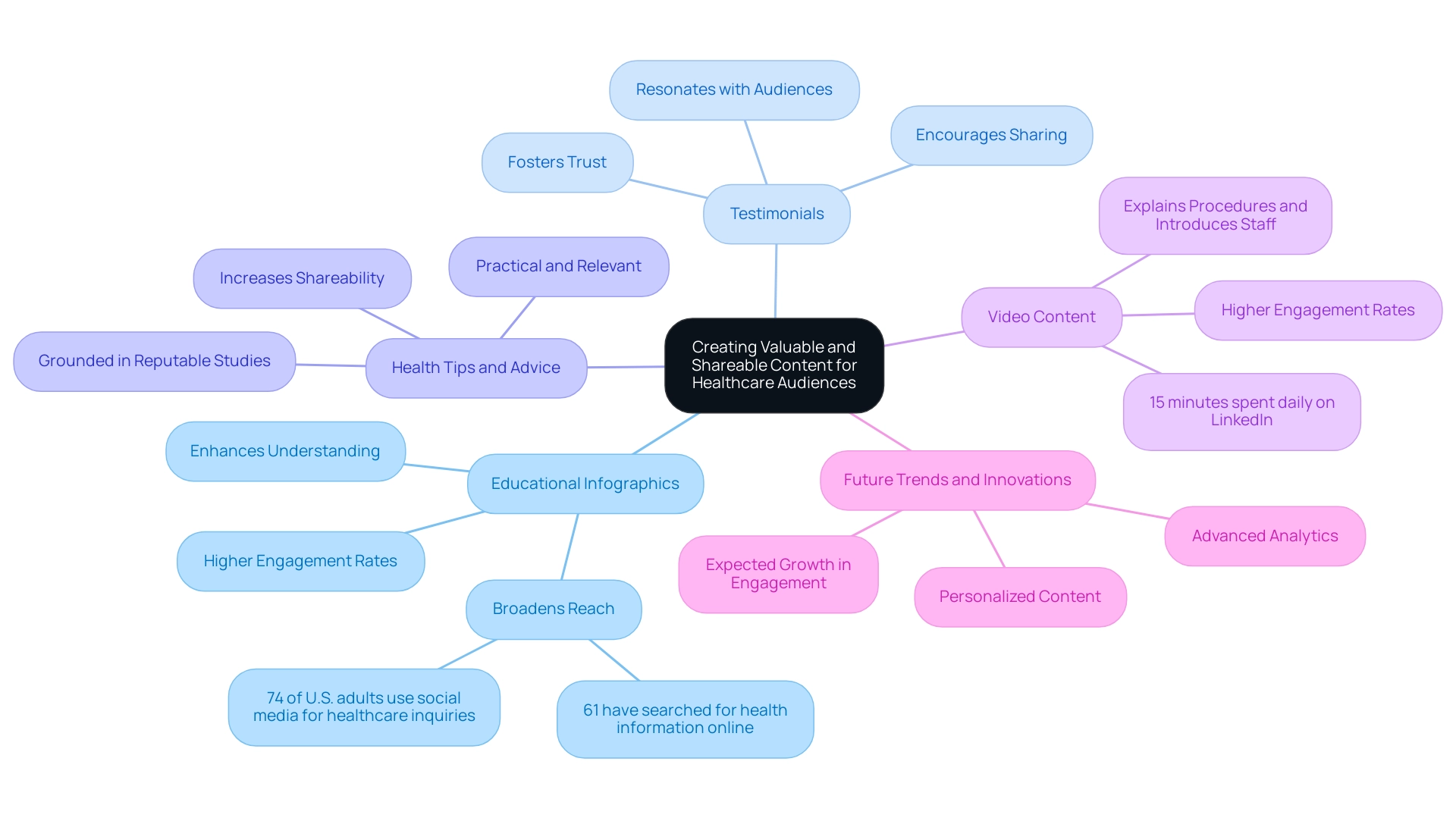
Navigating Legal and Ethical Considerations in Healthcare Social Media
To effectively navigate the legal and ethical landscape of social media utilization in healthcare, organizations should adhere to the following strategies:
- Understand HIPAA Regulations: It is crucial to familiarize oneself with the Health Insurance Portability and Accountability Act (HIPAA) regulations concerning individual information. Healthcare professionals must ensure that no confidential individual information is revealed on networking platforms, especially considering events such as the 2022 breach impacting 1,500,000 records by Community Health Network. As mentioned, “there are no specific rules for social media and privacy in HIPAA because HIPAA was established many years prior to social media,” emphasizing the necessity for vigilance in securing data.
- Obtain Consent: Before sharing any stories or images online, acquiring explicit consent from the individual is essential. This practice not only fosters trust but also aligns with ethical standards in privacy.
- Avoid Medical Advice: Healthcare organizations should refrain from providing personalized medical advice through social media channels. Instead, it is advisable to encourage individuals to engage directly with their healthcare providers for such inquiries. Doing so safeguards both the organization and the individuals receiving care.
- Monitor Content: Regular observation and assessment of all online posts is necessary to ensure compliance with legal standards and organizational policies. This vigilance is critical, especially considering the ongoing concerns regarding theft and loss of both electronic and paper records of personal health information (PHI). Organizations should create and implement a strong online policy that includes penalties for breaches to reduce risks related to privacy violations, as there are currently no specific HIPAA regulations overseeing this area. By upholding these practices, healthcare institutions can manage the intricacies of social media for healthcare while protecting individual information.
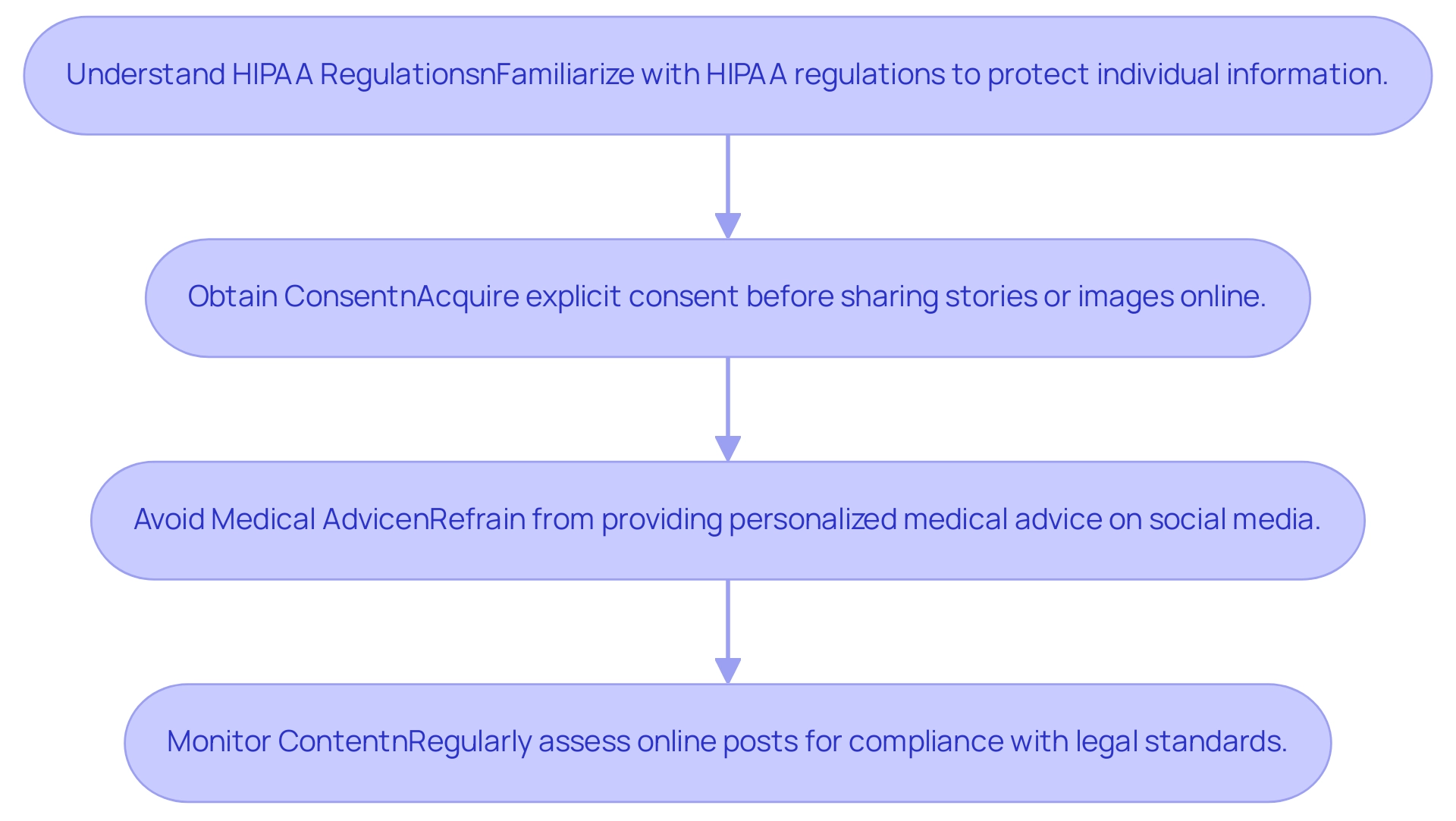
Enhancing Patient-Provider Communication Through Social Media
To effectively improve patient-provider communication via online platforms, consider the following strategies:
-
Encourage Questions: Create engaging posts that invite individuals to ask questions regarding their health or your services. This approach fosters an open dialogue and demonstrates a commitment to patient-centered care.
-
Host Live Q&A Sessions: Utilize live video capabilities on platforms such as Facebook, which is the most widely used networking platform among hospitals, to conduct live Q&A sessions. This enables individuals to interact directly with healthcare providers in real-time, addressing concerns and building trust. As mentioned in a case study, hospitals concentrating their online efforts on platforms with demonstrated effectiveness, like Facebook, can significantly improve engagement with individuals.
-
Share Updates and Announcements: Utilize social media to keep individuals informed about new services, health alerts, and changes in office hours. Regular updates can help nurture a sense of community and keep individuals connected with your practice.
-
Respond Promptly: Ensure that inquiries and comments are addressed in a timely manner. Timely replies not only demonstrate that you appreciate feedback from individuals but also improve the overall experience for those receiving care.
It’s essential to recognize that while hospitals allocate 85% of their marketing budget to Google Ads, concentrating on social media strategies can produce considerable advantages in engagement. By implementing these strategies, professionals in the medical field can significantly enhance communication with individuals, leading to better engagement and satisfaction.
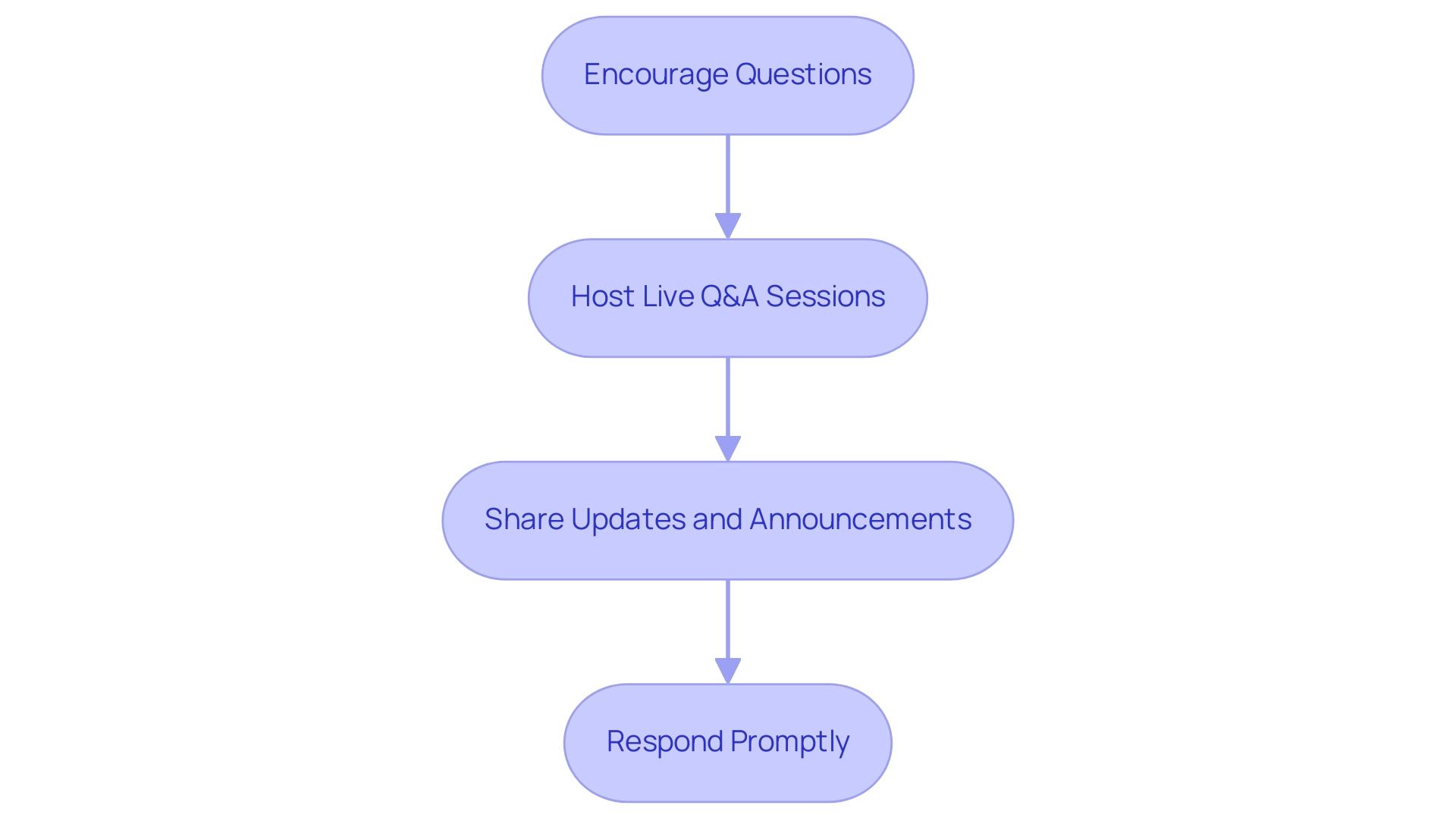
Innovative Content Strategies for Engaging Healthcare Audiences
To effectively implement innovative content strategies in medical marketing, consider the following approaches:
- Create Interactive Content: Develop engaging quizzes or polls centered around health-related topics. This not only captivates users but also encourages them to share their results, thereby expanding your reach. Given that 59% of U.S. adults search for health or medical information online, using social media for healthcare to create engaging content is crucial to attract this audience.
- Leverage User-Generated Content: Actively encourage individuals to share their experiences with your services and tag your organization in their posts. This approach fosters a sense of community and authenticity, which is increasingly vital in social media for healthcare marketing.
- Utilize Storytelling: Share compelling narratives that highlight patient journeys, emphasizing the human aspect of medical care. Storytelling resonates deeply with audiences, making your content more relatable and impactful. As Poulomi Chakraborty from WinSavvy observes, her skill in translating intricate digital ideas into clear, actionable strategies distinguishes her, emphasizing the significance of effective storytelling in the medical field.
- Experiment with Emerging Platforms: Stay informed about new social media for healthcare platforms and trends to effectively engage younger audiences. Platforms such as TikTok and Clubhouse offer unique opportunities for outreach, requiring you to adapt your content to fit their formats and user preferences. Additionally, with automation in healthcare marketing significantly reducing administrative costs—amounting to $122 billion—implementing these innovative strategies can enhance efficiency and drive better results.
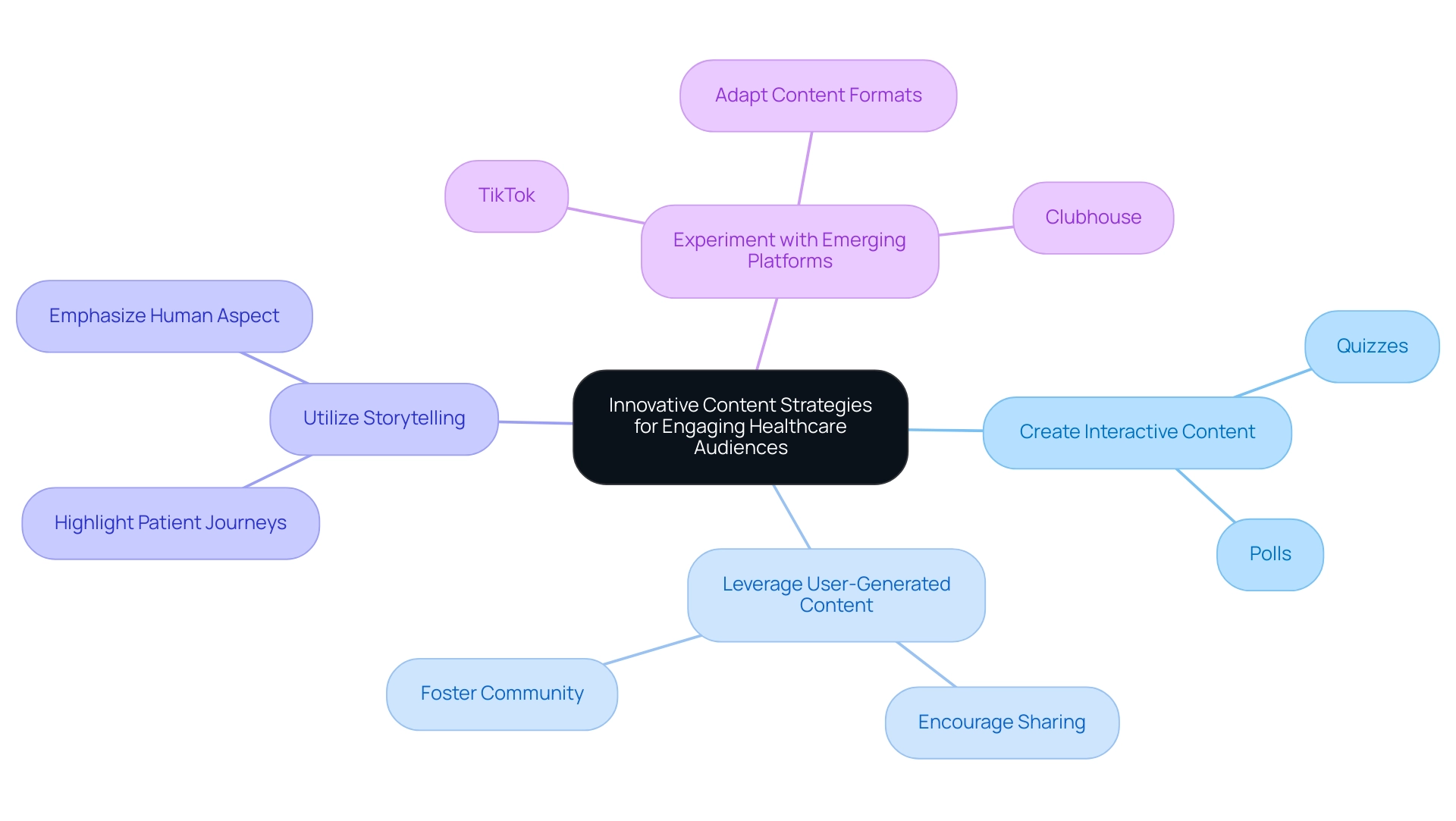
Conclusion
Healthcare organizations are at a pivotal moment in their marketing strategies, particularly with the increasing prominence of social media. By selecting the appropriate platforms, maintaining consistent branding, and posting regularly, organizations can effectively engage their audiences. Monitoring engagement metrics is essential for adapting strategies that resonate with patients, as demonstrated by successful initiatives like the Mayo Clinic Minute series.
Creating valuable content is equally important. Utilizing educational infographics, patient testimonials, and engaging video content can enhance visibility and foster trust among potential patients. The statistics speak for themselves—healthcare marketing is projected to grow significantly, underscoring the need for innovative and shareable content strategies.
Navigating the legal and ethical dimensions of social media cannot be overlooked. Understanding HIPAA regulations, obtaining patient consent, and avoiding personalized medical advice are critical practices that safeguard patient privacy while promoting transparency. By implementing a robust social media policy, healthcare organizations can mitigate risks and maintain trust.
Finally, enhancing patient-provider communication through social media can lead to improved patient engagement and satisfaction. Encouraging questions, hosting live Q&A sessions, and responding promptly to inquiries build a strong connection between patients and healthcare providers. By embracing these best practices and innovative strategies, healthcare organizations can effectively harness social media’s potential, ultimately leading to better patient outcomes and a more engaged community.

